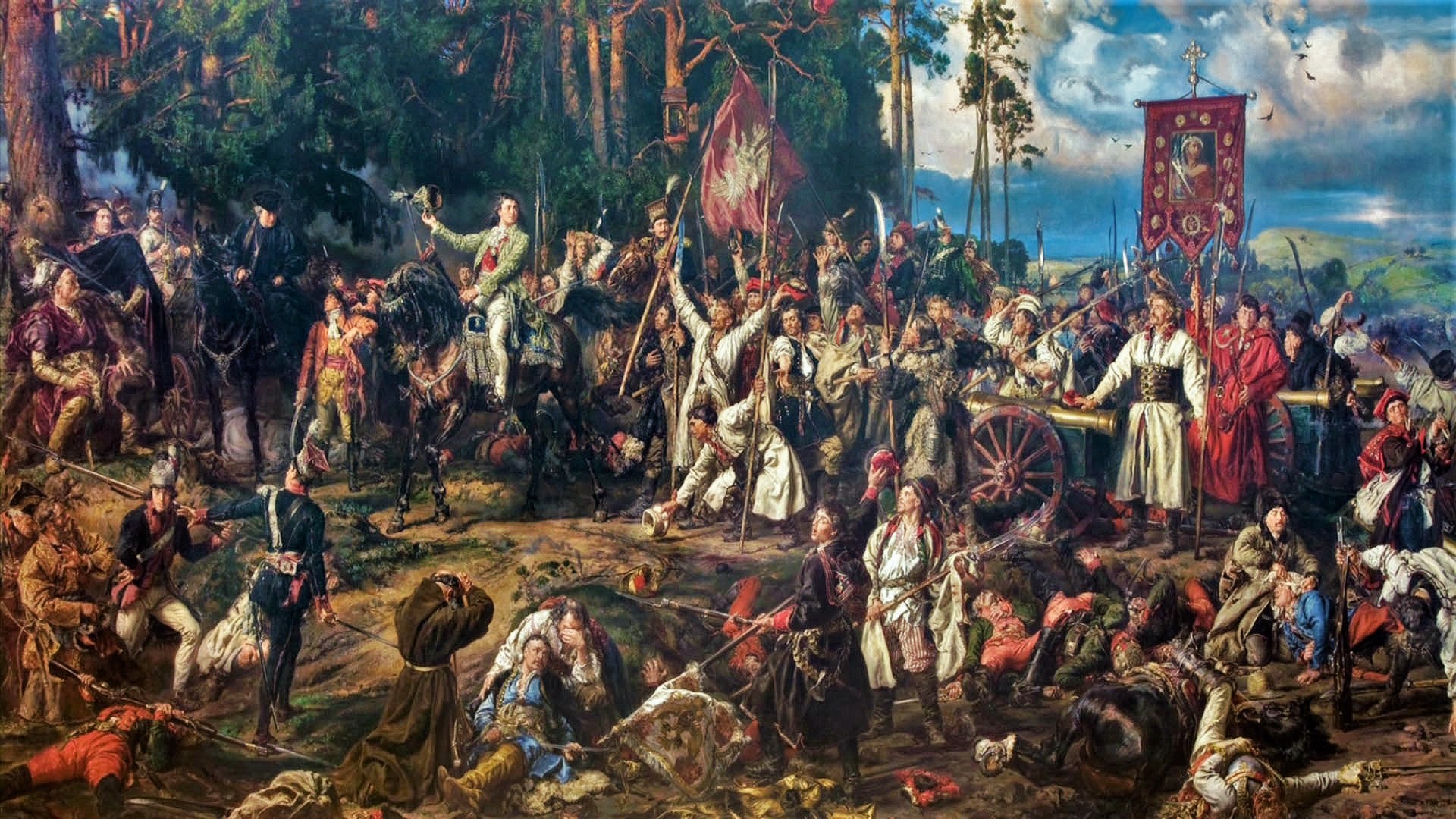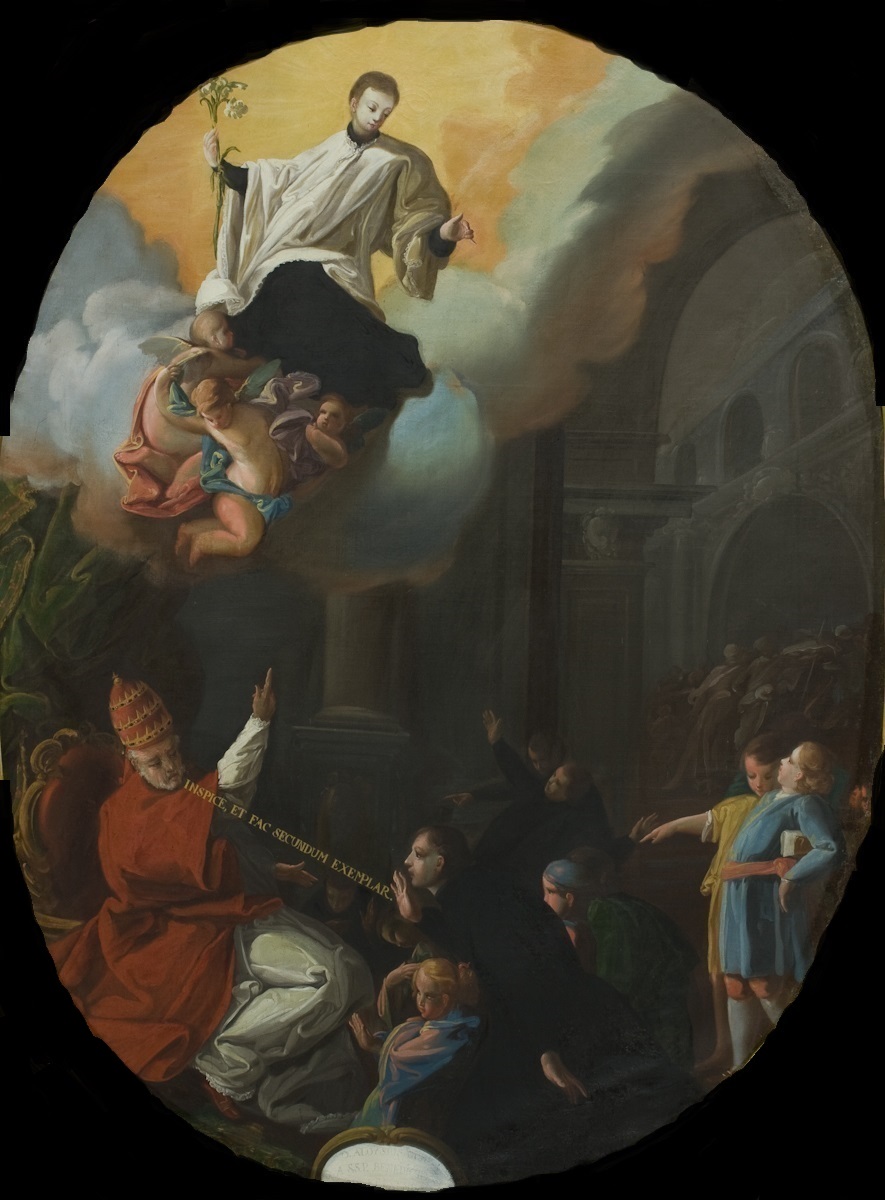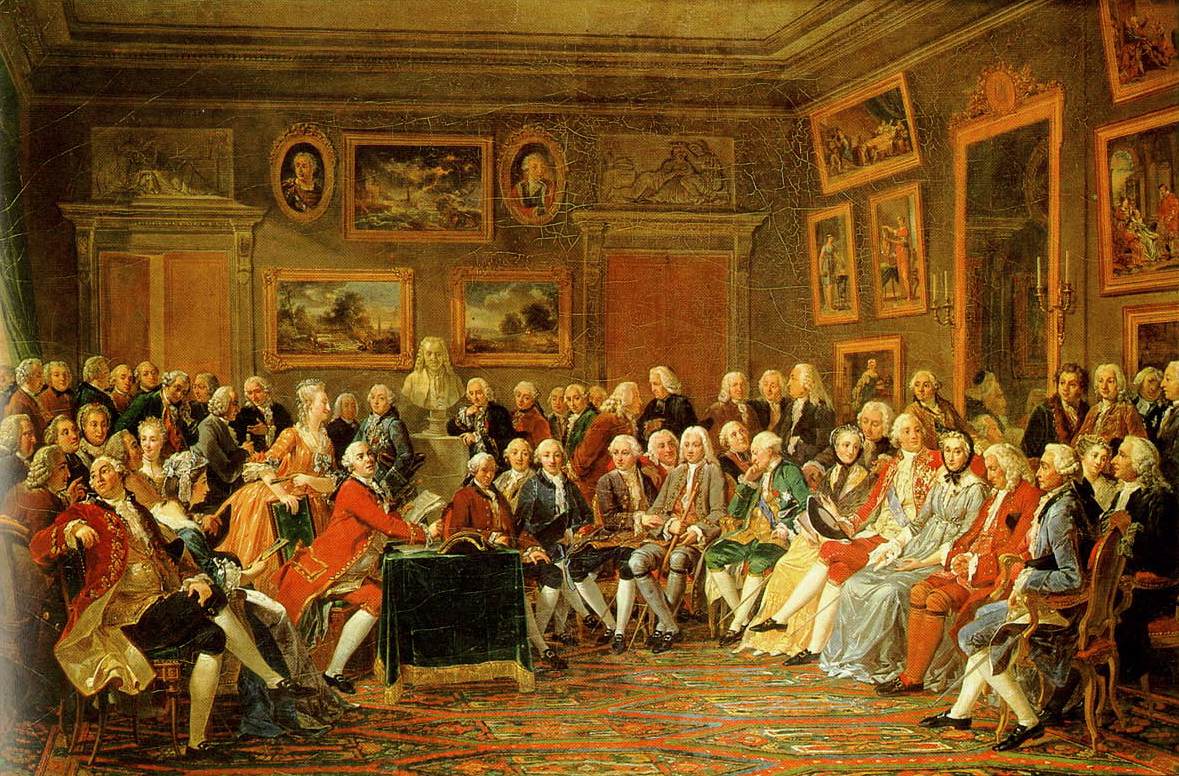|
Yard With Lunatics
''Yard with Lunatics'' (Spanish: ''Corral de locos'') is a small oil-on-tinplate painting completed by the Spanish artist Francisco Goya between 1793 and 1794. Goya said that the painting was informed by scenes of institutions he had witnessed as a youth in Zaragoza. ''Yard with Lunatics'' was painted around the time when Goya’s deafness and fear of mental illness were developing and he was increasingly complaining of his health. A contemporary diagnosis read, "the noises in his head and deafness aren’t improving, yet his vision is much better and he is back in control of his balance." Background Though Goya had to that point been preoccupied with commissioned portraits of royalty and noblemen, this work is one of a dozen small-scale, dark images he produced independently. Uncommissioned, it was one of the first of Goya's mid-1790s cabinet paintings, in which his earlier search for ideal beauty gave way to an examination of the relationship between naturalism and fantasy tha ... [...More Info...] [...Related Items...] OR: [Wikipedia] [Google] [Baidu] |
Francisco Goya
Francisco José de Goya y Lucientes (; ; 30 March 174616 April 1828) was a Spanish romantic painter and printmaker. He is considered the most important Spanish artist of the late 18th and early 19th centuries. His paintings, drawings, and engravings reflected contemporary historical upheavals and influenced important 19th- and 20th-century painters. Goya is often referred to as the last of the Old Masters and the first of the moderns. Goya was born to a middle-class family in 1746, in Fuendetodos in Aragon. He studied painting from age 14 under José Luzán y Martinez and moved to Madrid to study with Anton Raphael Mengs. He married Josefa Bayeu in 1773. Their life was characterised by a series of pregnancies and miscarriages, and only one child, a son, survived into adulthood. Goya became a court painter to the Spanish Crown in 1786 and this early portion of his career is marked by portraits of the Spanish aristocracy and royalty, and Rococo-style tapestry cartoons ... [...More Info...] [...Related Items...] OR: [Wikipedia] [Google] [Baidu] |
Tinnitus
Tinnitus is the perception of sound when no corresponding external sound is present. Nearly everyone experiences a faint "normal tinnitus" in a completely quiet room; but it is of concern only if it is bothersome, interferes with normal hearing, or is associated with other problems. While often described as a ringing, it may also sound like a clicking, buzzing, hissing or roaring. It may be soft or loud, low- or high- pitched, and may seem to come from one or both ears or from the head itself. In some people, it may interfere with concentration, and in some cases is associated with anxiety and depression. Tinnitus is usually associated with a degree of hearing loss and decreased comprehension of speech in noisy environments. It is common, affecting about 10–15% of people. Most, however, tolerate it well, and it is a significant problem in only 1–2% of all people. It can trigger a fight-or-flight response, as the brain may perceive it as dangerous and important. The word ' ... [...More Info...] [...Related Items...] OR: [Wikipedia] [Google] [Baidu] |
1794 Paintings
Events January–March * January 1 – The Stibo Group is founded by Niels Lund as a printing company in Aarhus (Denmark). * January 13 – The U.S. Congress enacts a law providing for, effective May 1, 1795, a United States flag of 15 stars and 15 stripes, in recognition of the recent admission of Vermont and Kentucky as the 14th and 15th states. A subsequent act restores the number of stripes to 13, but provides for additional stars upon the admission of each additional state. * January 21 – King George III of Great Britain delivers the speech opening Parliament and recommends a continuation of Britain's war with France. * February 4 – French Revolution: The National Convention of the French First Republic abolishes slavery. * February 8 – Wreck of the Ten Sail on Grand Cayman. * February 11 – The first session of the United States Senate is open to the public. * March 4 – The Eleventh Amendment to the United States Constitution ... [...More Info...] [...Related Items...] OR: [Wikipedia] [Google] [Baidu] |
List Of Works By Francisco Goya
The following is an incomplete list of works by the Spanish painter and printmaker Francisco Goya. Paintings (1763–1774) Paintings (1775–1792) ''see also: List of Francisco Goya's tapestry cartoons'' Paintings (1793–1807) Paintings (1808–1818) Paintings (1819–1828) Prints (Los Caprichos) As well as paintings Goya was also one of the greatest ever printmaking, printmakers. He produced several sets of prints using the relatively new technique of aquatint. Towards the end of his life Goya also began to experiment with lithography. The dimensions given refer to the size of the printed image rather than the paper that the image is printed on. Prints (Disasters of War) Prints (La Tauromaquia) Prints (Los disparates) Prints (Bulls of Bordeaux) Prints (Other prints) See also * List of Francisco Goya's tapestry cartoons * Black paintings Notes References External links Catalogue at University of ZaragossaGoya at the Prado {{Lists of pain ... [...More Info...] [...Related Items...] OR: [Wikipedia] [Google] [Baidu] |
Algur H
Algur is a village in the southern state of Karnataka, India. It is located in the Sindgi taluk A tehsil (, also known as tahsil, taluka, or taluk) is a local unit of administrative division in some countries of South Asia. It is a subdistrict of the area within a district including the designated populated place that serves as its administr ... of Bijapur district. Demography In the 2011 census, Algur had 800 families with a population of 4,110, consisting of 2,069 males and 2,041 females. The population of children aged 0–6 was 638, making up 15.52% of the total population of the village. The average sex ratio was 986 out of 1000, which is higher than the state average of 973 out of 1000. The child sex ratio in the village was 973 out of 1000, which is higher than the average of 948 out of 1000 in the state of Karnataka. References Villages in Bijapur district, Karnataka {{BijapurKarnataka-geo-stub ... [...More Info...] [...Related Items...] OR: [Wikipedia] [Google] [Baidu] |
Voltaire
François-Marie Arouet (; 21 November 169430 May 1778) was a French Enlightenment writer, historian, and philosopher. Known by his '' nom de plume'' M. de Voltaire (; also ; ), he was famous for his wit, and his criticism of Christianity—especially of the Roman Catholic Church—and of slavery. Voltaire was an advocate of freedom of speech, freedom of religion, and separation of church and state. Voltaire was a versatile and prolific writer, producing works in almost every literary form, including plays, poems, novels, essays, histories, and scientific expositions. He wrote more than 20,000 letters and 2,000 books and pamphlets. Voltaire was one of the first authors to become renowned and commercially successful internationally. He was an outspoken advocate of civil liberties and was at constant risk from the strict censorship laws of the Catholic French monarchy. His polemics witheringly satirized intolerance, religious dogma, and the French institutions of his day. H ... [...More Info...] [...Related Items...] OR: [Wikipedia] [Google] [Baidu] |
Age Of Enlightenment
The Age of Enlightenment or the Enlightenment; german: Aufklärung, "Enlightenment"; it, L'Illuminismo, "Enlightenment"; pl, Oświecenie, "Enlightenment"; pt, Iluminismo, "Enlightenment"; es, La Ilustración, "Enlightenment" was an intellectual and philosophical movement that dominated Europe in the 17th and 18th centuries with global influences and effects. The Enlightenment included a range of ideas centered on the value of human happiness, the pursuit of knowledge obtained by means of reason and the evidence of the senses, and ideals such as liberty, progress, toleration, fraternity, and constitutional government. The Enlightenment was preceded by the Scientific Revolution and the work of Francis Bacon, John Locke, and others. Some date the beginning of the Enlightenment to the publication of René Descartes' '' Discourse on the Method'' in 1637, featuring his famous dictum, '' Cogito, ergo sum'' ("I think, therefore I am"). Others cite the publication of Isaa ... [...More Info...] [...Related Items...] OR: [Wikipedia] [Google] [Baidu] |
William Hogarth
William Hogarth (; 10 November 1697 – 26 October 1764) was an English painter, engraver, pictorial satirist, social critic, editorial cartoonist and occasional writer on art. His work ranges from realistic portraiture to comic strip-like series of pictures called "modern moral subjects", and he is perhaps best known for his series '' A Harlot's Progress'', '' A Rake's Progress'' and '' Marriage A-la-Mode''. Knowledge of his work is so pervasive that satirical political illustrations in this style are often referred to as "Hogarthian". Hogarth was born in London to a lower-middle-class family. In his youth he took up an apprenticeship with an engraver, but did not complete the apprenticeship. His father underwent periods of mixed fortune, and was at one time imprisoned in lieu of outstanding debts, an event that is thought to have informed William's paintings and prints with a hard edge. Influenced by French and Italian painting and engraving, Hogarth's works are most ... [...More Info...] [...Related Items...] OR: [Wikipedia] [Google] [Baidu] |
Robert Hughes (critic)
Robert Studley Forrest Hughes AO (28 July 19386 August 2012) was an Australian-born art critic, writer, and producer of television documentaries. He was described in 1997 by Robert Boynton of ''The New York Times'' as "the most famous art critic in the world." Hughes earned widespread recognition for his book and television series on modern art, '' The Shock of the New'', and for his longstanding position as art critic with ''TIME'' magazine. He is also known for his best seller '' The Fatal Shore'' (1986), a study of the British convict system in early Australian history. Known for his contentious critiques of art and artists, Hughes was generally conservative in his tastes, although he did not belong to a particular philosophical camp. His writing was noted for its power and elegance. Early life Hughes was born in Sydney, in 1938. His father and paternal grandfather were lawyers. Hughes's father, Geoffrey Forrest Hughes, was a pilot in the First World War, with later c ... [...More Info...] [...Related Items...] OR: [Wikipedia] [Google] [Baidu] |
Lunatic Asylum
The lunatic asylum (or insane asylum) was an early precursor of the modern psychiatric hospital. The fall of the lunatic asylum and its eventual replacement by modern psychiatric hospitals explains the rise of organized, institutional psychiatry. While there were earlier institutions that housed the " insane", the conclusion that institutionalization was the correct solution to treating people considered to be "mad" was part of a social process in the 19th century that began to seek solutions outside of families and local communities. History Medieval era In the Islamic world, the '' Bimaristans'' were described by European travellers, who wrote about their wonder at the care and kindness shown to lunatics. In 872, Ahmad ibn Tulun built a hospital in Cairo that provided care to the insane, which included music therapy. Nonetheless, physical historian Roy Porter cautions against idealising the role of hospitals generally in medieval Islam, stating that "They were a drop in the ... [...More Info...] [...Related Items...] OR: [Wikipedia] [Google] [Baidu] |
Mental Illness
A mental disorder, also referred to as a mental illness or psychiatric disorder, is a behavioral or mental pattern that causes significant distress or impairment of personal functioning. Such features may be persistent, relapsing and remitting, or occur as single episodes. Many disorders have been described, with signs and symptoms that vary widely between specific disorders. Such disorders may be diagnosed by a mental health professional, usually a clinical psychologist or psychiatrist. The causes of mental disorders are often unclear. Theories may incorporate findings from a range of fields. Mental disorders are usually defined by a combination of how a person behaves, feels, perceives, or thinks. This may be associated with particular regions or functions of the brain, often in a social context. A mental disorder is one aspect of mental health. Cultural and religious beliefs, as well as social norms, should be taken into account when making a diagnosis. Services a ... [...More Info...] [...Related Items...] OR: [Wikipedia] [Google] [Baidu] |
Ménière's Disease
Ménière's disease (MD) is a disease of the inner ear that is characterized by potentially severe and incapacitating episodes of vertigo, tinnitus, hearing loss, and a feeling of fullness in the ear. Typically, only one ear is affected initially, but over time, both ears may become involved. Episodes generally last from 20 minutes to a few hours. The time between episodes varies. The hearing loss and ringing in the ears can become constant over time. The cause of Ménière's disease is unclear, but likely involves both genetic and environmental factors. A number of theories exist for why it occurs, including constrictions in blood vessels, viral infections, and autoimmune reactions. About 10% of cases run in families. Symptoms are believed to occur as the result of increased fluid buildup in the labyrinth of the inner ear. Diagnosis is based on the symptoms and a hearing test. Other conditions that may produce similar symptoms include vestibular migraine and transient i ... [...More Info...] [...Related Items...] OR: [Wikipedia] [Google] [Baidu] |









